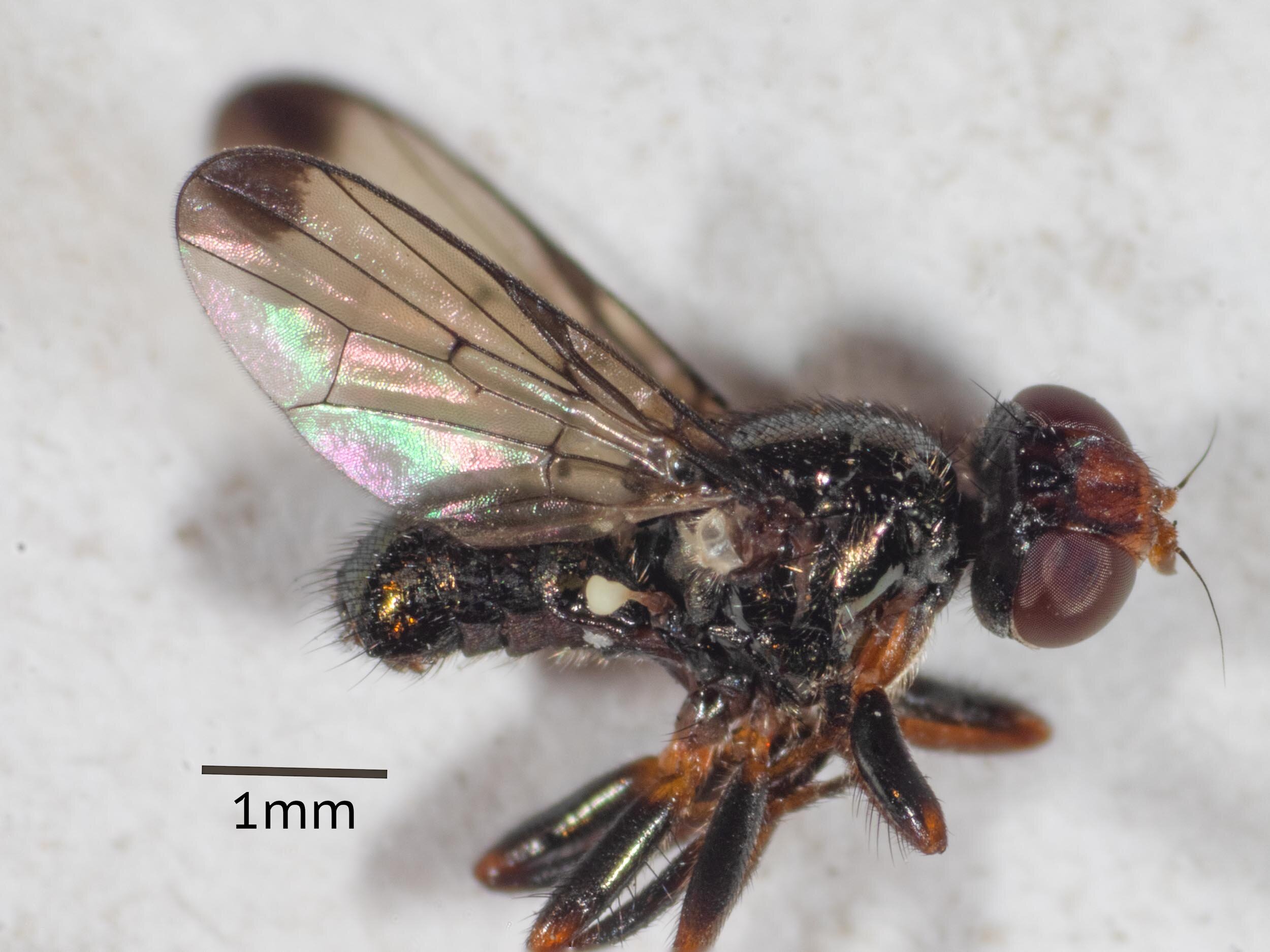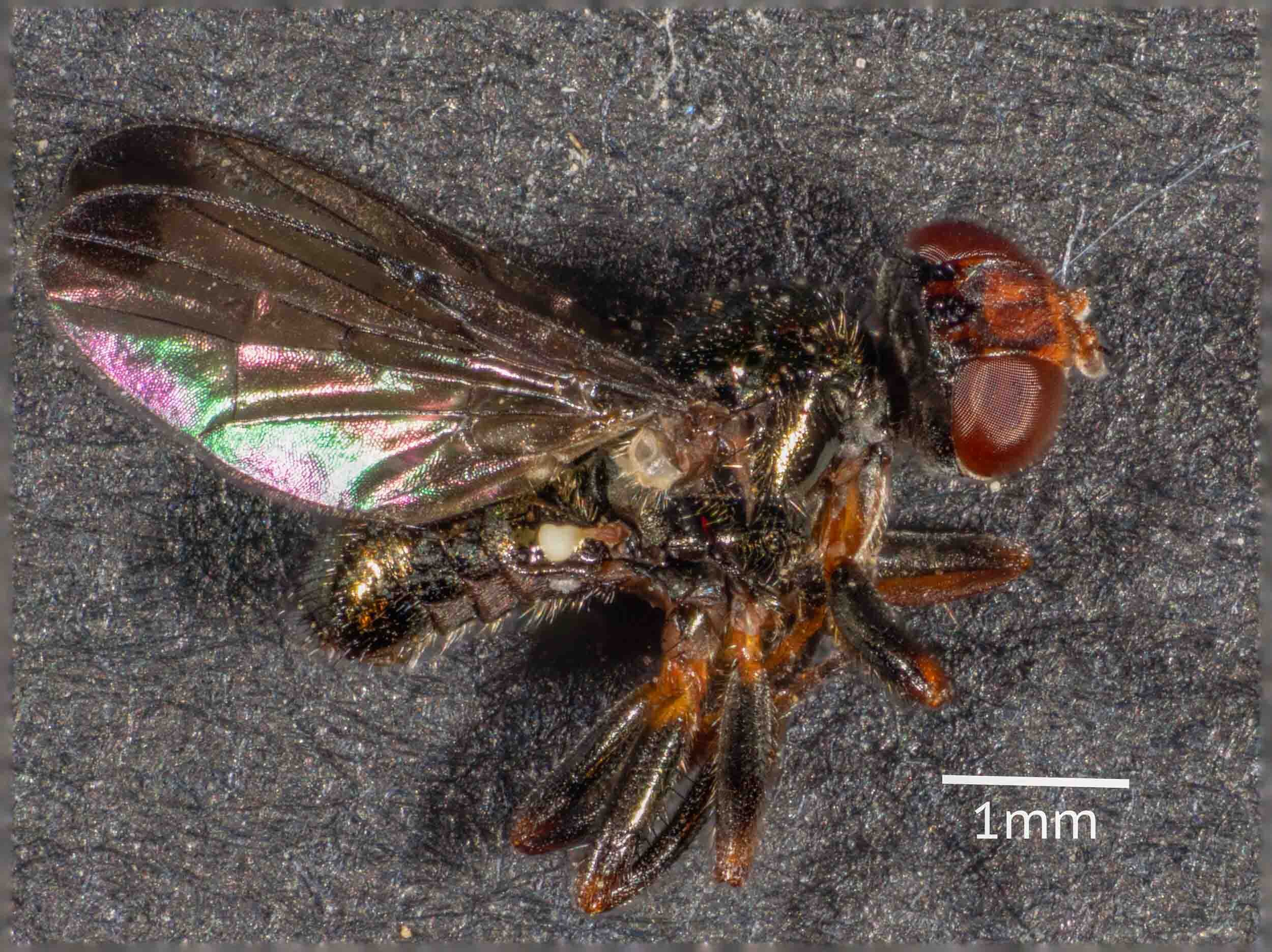Parapalaeosepsis: Sepsidae

Workbook
We have previously seen flies belonging to the family Sepsidae (Black Scavenger Flies) at various locations on the block, including large swarms on our compost heap and on the stinkhorn fungus Phallus multicolor. These flies show a distinctive behaviour of waving their wings back and forth to attract females.
This fly matches the description and drawings of the species Parapalaeosepsis plebeia in Zuska and Colless J.Aust.ent.Soc 23: 59-67 (1984) - in particular the wing patterning “wing almost always with small, dark, preapical spot, which is roughly circular, sharply delimited, and not reaching beyond vein R4+5”.
Kerri has placed an observation of these flies on iNaturalist.
2 January 2021
At 8:48am, I spotted a swarm of sepsid flies on some freshly deposited wallaby dung behind the house.
I made a video showing the wing flicking behaviour of these flies.
While these flies looked very similar to the sepsid flies seen previously, the patterning of their wings was different. The black dot, which lies over vein R2+3 in Parapalaeosepsis plebeia is larger and is centred over vein R4+5.
A second fly species, showing a similar but slower wing flicking behaviour was seen on the dung (seen towards the bottom of the dung in the video). This is probably a Signal Fly Rivellia sp. from the family Platystomatidae, based on the striped pattern on the wings.
11 September 2021
10:54am. Wallaby dung on the Orchid Track was covered in a swarm of the same Parapalaeosepsis sp. flies.
11:06am. Wombat dung on the River Track was also covered in the same flies.
23 September 2021
I found a pile of wombat dung just after midday on the Lot 6 gully track. This had been deposited on and around a fallen eucalypt branch lying over the suspected subterranean termite colony, near the start of this track.
Several species of flies were seen on the dung, including many sepsid flies, some signal flies and a few shining blue/green muscid flies, likely to be Pyrellia tasmaniae. I collected one of the signal flies, which appears to be the same Rivellia sp. as seen on 3 Jan 2021. This is labelled #2.
This video shows the 3 species and their behaviour.
The sepsid flies looked identical to those seen on 2 Jan 2021. I collected a number of these flies and imaged them under the Tessovar.
This is a male, labelled #1.
The wing venation looks identical to Rivellia connata in Hendel 1914 and Malloch 1930.
A pair of mating flies was collected. This is the female (#3)
This is the male (specimen #4) of the mating pair.
These are two other males collected from that same swarm (specimen #5, 6).
I collected a sample of the dung and sorted through it under the microscope. It was teeming with rove beetles. I also found numerous mites in the mass.
A signal fly was collected with the dung (specimen #2). These are images of that fly.
This is a workbook page … a part of our website where we record the observations and references used in making species identifications. The notes will not necessarily be complete. They are a record for our own use, but we are happy to share this information with others.









































